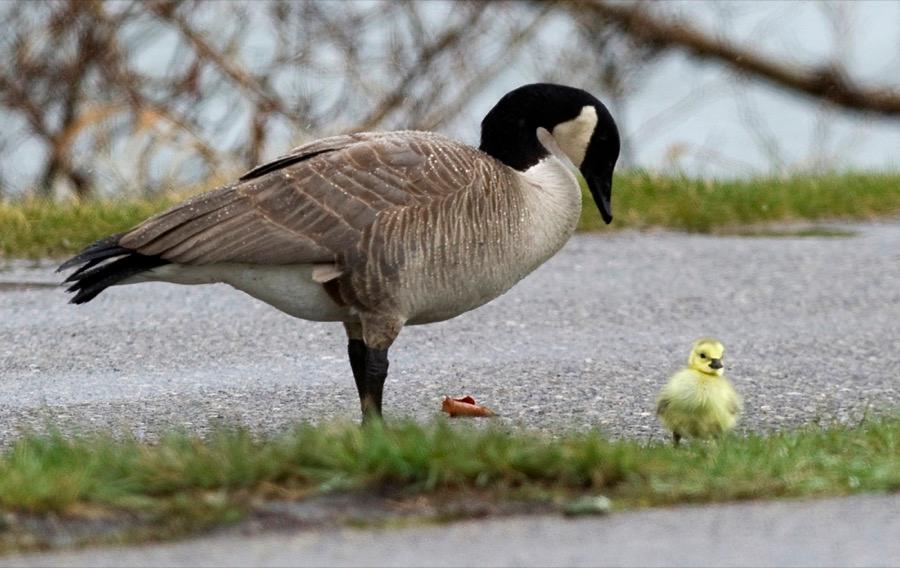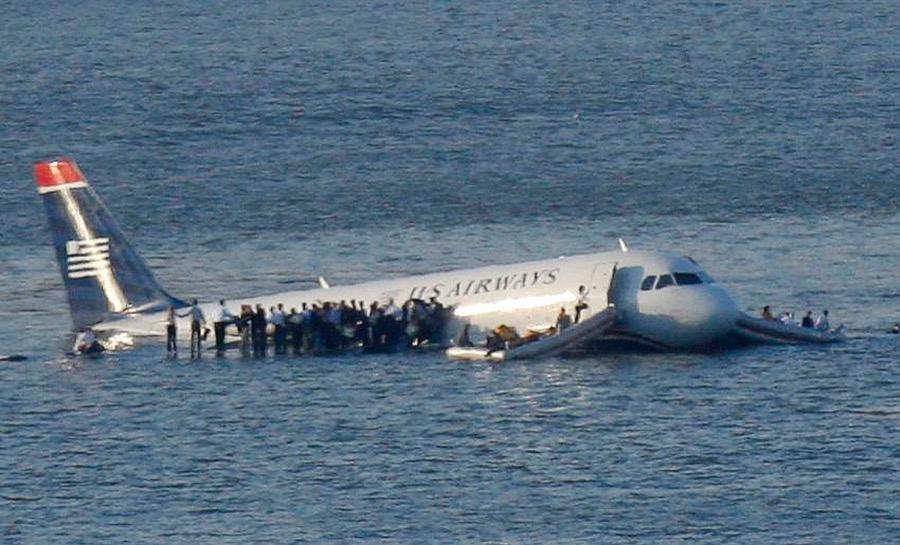Meet a forensic ornithologist, who identifies what’s left after avians and airplanes collide
Passengers stand on the wings of a US Airways plane after it landed in the Hudson River in New York after a flock of birds struck the engines, Jan. 15, 2009.
When avians and airplanes collide, we tend to hear the big stories — like when a flock of birds crippled the engines of US Airways Flight 1549 in 2009, forcing a crash-landing in the Hudson River. (All 155 passengers and crew survived.)
But thousands of birds hit planes in the United States each year, to less fanfare. “There are somewhere around 13,000 bird strikes reported to civil aviation and another 4,000 to 5,000 from the military, so it’s quite a few birds every year,” says forensic ornithologist Carla Dove.
Dove and her team at the Smithsonian Institution’s Feather Identification Lab see about 9,000 of those birds annually — or what’s left of them. Sometimes, she says, the lab receives just a feather or two. Other times, they get “snarge” — a loose term for downy fragments and smashed bones and guts.
Then, the ornithologists get to work — using forensic techniques like DNA and microscopic analysis to identify the species of bird involved in the collision. They can also compare feather samples to the Smithsonian’s extensive collection of more than 600,000 bird specimens.
Dove and her team receive bird strike specimens from groups like the military and the Federal Aviation Administration. "The military has a bird aircraft strike hazard team that will pick up the remains,” she says. (Side note: The official Air Force acronym for this team is BASH.) “The civil aviation have biologists on the airports that pick up remains and send them to us.”
In each case, officials hope that learning more about the species typically involved in airplane collisions will help prevent bird-related air disasters in the future. The top offender? The horned lark, Dove said in a Smithsonian webcast.
oembed://https%3A//www.youtube.com/watch%3Fv%3DLd35eKlvxSc
Dove says that her team can identify the birds at some level “about 98 percent of the time.” “We say it’s a duck, but we can’t say it’s a mallard or pintail,” she adds. “And a few times, if it’s just a piece of black feather with no characters or no pattern or no microscopic diagnostic characters, then we just have to say it’s a bird.”
Once airport officials know more about the types of birds causing strikes in the area, they can deter birds using a few different methods. “There are border collies that keep certain birds away,” Dove says. “There are peregrine falcons or other falcons that can be trained.”
Sometimes, the solution is as simple as cutting the grass to discourage nesting of birds and prey — or letting it grow, if local birds like watching for predators from open land. “So, you have to know the problem on a specific airfield,” Dove adds. “And that’s where the species identification comes in.”
In the 25 years that Dove has been identifying the birds involved in airplane collisions, she’s seen shifting patterns in the distribution of certain species. The black vulture, for example, used to be spotted primarily in the southern United States.
“And now, more and more, we are seeing those [vultures] in bird strikes from northern states,” she says. “And so over time, bird distributions change. We don’t know why or what’s the cause of it. But we can just see those kinds of things in our data.”

When it came to US Airways Flight 1549, investigators and engineers were anxious to know what kind of bird snuffed the Airbus A320’s massive engines. “One reason is that there is another bird that looks very similar to a Canada goose in New York called a brant,” Dove explains.
Brants are small, she adds — just 3 to 4 pounds, as opposed to the Canada goose, which weighs 8 to 10 pounds. “And the engines on that aircraft were designed to take a 3- to 4-pound bird and keep on functioning.”
Using tissue samples, feathers and yes — snarge, her team confirmed that the birds involved were Canada geese. The engineers “were relieved,” she says — the Airbus’ engines were not designed to inhale 10-pound birds and keep working.
Not surprisingly, there were other benefits to knowing that Canada geese caused the crash: “We can know what that bird eats and why is it there and when is it there and what potential problems could it cause,” Dove says.
“And then you can go out on to the airfield and do something.”
This article is based on an interview that aired on PRI's Science Friday.
